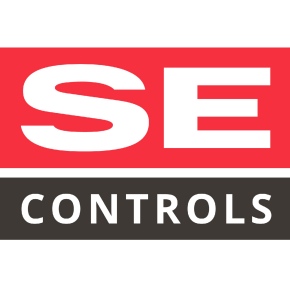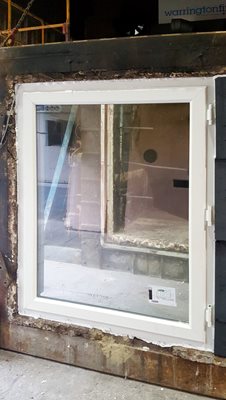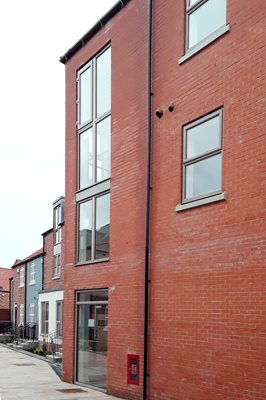
Glazing systems and fire safety – a clearer view with SE Controls
Among the wide range of functions performed by glass and glazing systems, as part of the building envelope, fire safety and protecting lives are of critical importance, as SE Controls explain in this piece.
Within residential buildings over three storeys high, smoke control systems need to be incorporated as a compulsory part of the building’s design to ensure that, should a fire occur, escape routes can be kept free of smoke.
For other building types, such as hospitals, office buildings, transport terminals and airports, smoke control solutions perform the same function.
Even though each design may be unique, the buildings’ glazing systems are usually an integral and vital part of the smoke ventilation strategy, by opening automatically and allowing smoke to be vented.
This critical life safety role means smoke control is amongst the most highly regulated aspects of a building’s design and construction, which, by necessity, also includes the glazing systems that are used as automatic opening vents (AOVs) within the solution.

As a result, compliance is an absolute requirement, especially when designing, testing, fabricating and installing systems used for smoke control.
While Approved Document B (ADB) is widely acknowledged as the default reference document for building design and compliance for smoke control systems, a number of British and European standards, as well as the 2013 Construction Products Regulation (CPR), also form an essential part of the regulatory framework.
The EN12101 family of European standards has two parts that predominantly affect the façade and glazing industry. EN12101-10: 2005 covers smoke ventilation power supplies and EN12101-2: 2003 applies to smoke vents or smoke and heat exhaust ventilation (SHEVs).
Compliance to EN12101-10 can be readily policed, as the entire control panel, containing the power supply, is tested at an accredited test facility to the defined criteria within the standard.
The CE Mark label can then be applied to the product and a Declaration of Performance (DoP) certificate issued as proof of compliance to the CPR.
It is important to note just using ‘CE marked power supplies’ within the panel is insufficient for compliance, as the entire panel must be tested as a whole.
However, compliance and testing for EN12101-2 is more complex, as there are two core components for the AOV – the actuator and the window/ventilator.
While the actuator and window vent might already be compliant as individual items, to be fully compliant, both products must be tested together as a single unit by an independent accredited test facility.
In addition, the glazed vent must be manufactured under a third party audited Factory Production Control (FPC) scheme with the actuator either installed as part of this process, or with it on site.
If it is the latter, an audited process is also required to ensure the detail is identical to how it was tested. Once again, the only proof of compliance is the CE labelling on the product and the issuing of a DoP certification.
Failure to adhere to this process is already resulting in non-compliant windows that are being used as SHEVs being removed following the stringent compliance policing by approved inspectors, such as LABC and NHBC. In short, if the window/vent and actuator assembly does not have a DoP, then it is not compliant.
The importance of this requirement has already been embraced by the glazing and façades industry with system manufacturers having their products tested with actuators to ensure they are compliant and can be specified with confidence.
As a key part of this process, SE Controls actuators have been compliance tested and approved for use with 27 façade system companies.
Until recently, the glazing and façade systems that have been used as part of smoke control and SHEV solutions have been predominantly manufactured from aluminium for a range of reasons, including its fire performance, heat resistance and inherent strength and light weight.
Although the widespread use of PVCu (un-plasticised polyvinyl chloride) in domestic window installations, primarily in low-rise buildings, provides several advantages, such as cost, aesthetics and insulation, the big disadvantage is its low melting point of around 300 degrees Celsius, which is less than half that of aluminium.

While in normal use a PVCu window needs to comply with EN14351-1:2006, as soon as it is fitted with an actuator, its performance is governed by EN12101-2:2003.
To comply with this standard, smoke vents must withstand test temperatures in excess of 300 degrees Celsius, while maintaining their structural integrity and being able to function as an AOV as part of the building’s fire safety system.
As PVCu systems tend to use welded corner joints, this immediately made them unsuitable for SHEV applications. However, a number of PVCu window system companies have taken a fresh look at the problem and developed products that can now pass the industry standard EN12101-2 tests and achieve the required DoP certification.
By extending the use of metal reinforcement, which is already a feature of PVCu systems, to increase the windows’ rigidity and reinforce the corner joints, the latest systems can maintain their integrity even at the 300 degrees Celsius test temperature.
Four system companies have already introduced compliant products that have been tested with SE Controls actuators, with further product ranges in development and other manufacturers following suit.
This inevitably provides a new specification opportunity for architects and public sector specifiers dealing with residential buildings, as well as the potential to reduce costs on suitable projects.
The requests for testing SE Controls is receiving for PVCu window products, in relation to SHEV applications, is growing rapidly, which indicates this sector is likely to grow considerably in the near future.
This innovation is yet another indication of how the glass, glazing and façade industry continually adapts to new challenges and market requirements.
Contact:
SE Controls,
Lancaster House,
Wellington Crescent,
Fradley Park,
Lichfield,
Staffordshire,
WS13 8RZ
Visit Supplier's page
Latest news

28th March 2025
Ideal Heating Commercial announces 10-year warranty on Evomax 2 boiler
Evomax 2, the UK’s number one selling commercial wall-mounted boiler from Ideal Heating Commercial, is now available with a 10-year warranty.
Posted in Articles, Building Industry News, Building Products & Structures, Building Regulations & Accreditations, Building Services, Facility Management & Building Services, Heating Systems, Controls and Management, Heating, Ventilation and Air Conditioning - HVAC, Innovations & New Products, Pipes, Pipes & Fittings, Plumbing, Retrofit & Renovation, Sustainability & Energy Efficiency, Videos
28th March 2025
FLIR Si1-LD Acoustic Imaging Camera for Compressed Air Leak Detection
FLIR, a Teledyne Technologies company, introduces the Si1-LD, an industrial acoustic imaging camera that brings faster and more accurate compressed air leak detection to those operating on a modest condition monitoring budget.
Posted in Acoustics, Noise & Vibration Control, Articles, Building Industry News, Building Products & Structures, Building Services, Facility Management & Building Services, Information Technology, Innovations & New Products, Retrofit & Renovation, Sustainability & Energy Efficiency, Thermal Imaging and Monitors
28th March 2025
LIFTEX 2025 Seminar programme announced
Registration has opened for LIFTEX 2025. Now in its 37th year, LIFTEX 2025 is the UK’s only dedicated exhibition for the lift, escalator and access industry and takes place only once every three years.
Posted in Access Control & Door Entry Systems, Accessibility, Articles, Building Industry Events, Building Industry News, Building Products & Structures, Building Regulations & Accreditations, Building Services, Exhibitions and Conferences, Facility Management & Building Services, Health & Safety, Retrofit & Renovation, Security and Fire Protection, Seminars
28th March 2025
MCRMA welcomes ArcelorMittal UK to membership
A UK division of the global steelmaking business ArcelorMittal has become the latest new member of the MCRMA, the industry association representing the metal building envelope sector.
Posted in Articles, Building Associations & Institutes, Building Industry News, Building Products & Structures, Building Systems, Cladding, Facades, Posts, Restoration & Refurbishment, Retrofit & Renovation, Roofs, Steel and Structural Frames, Walls
 Sign up:
Sign up: